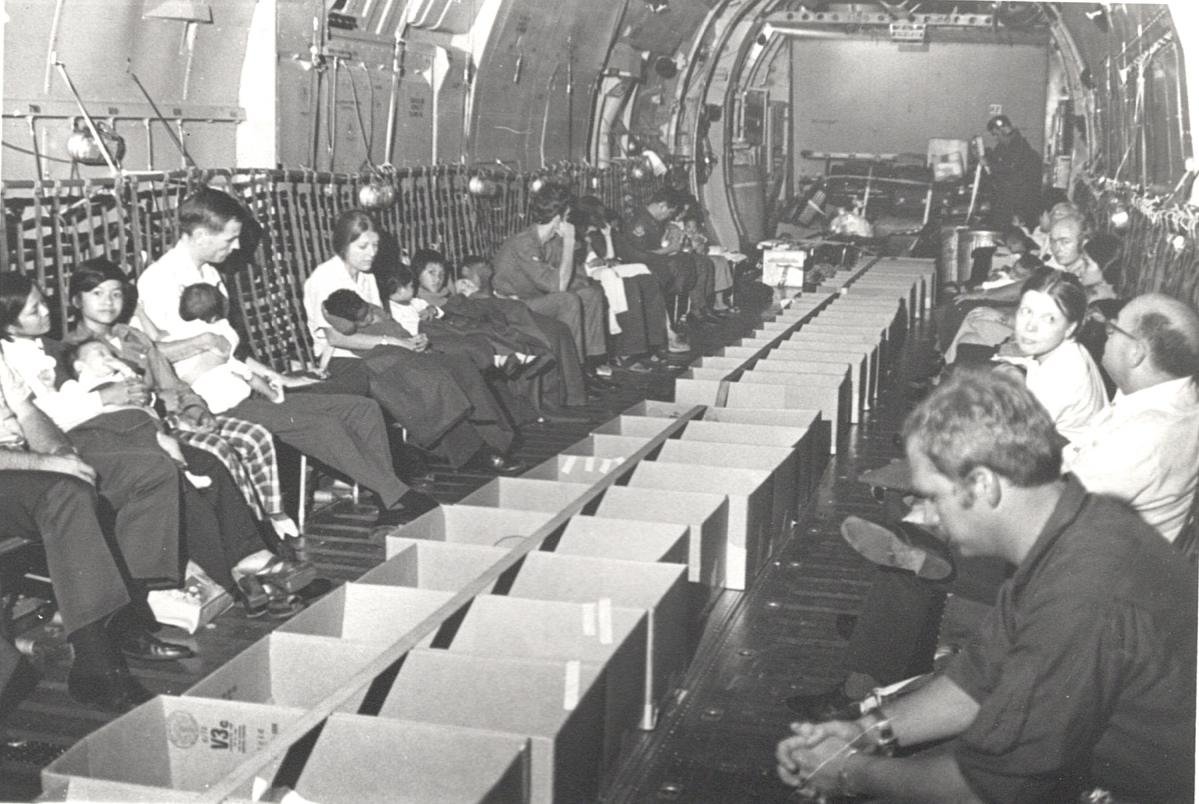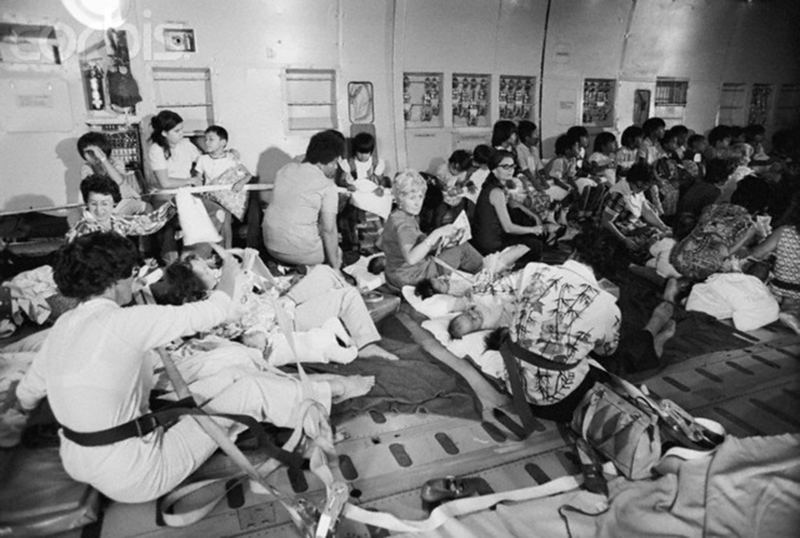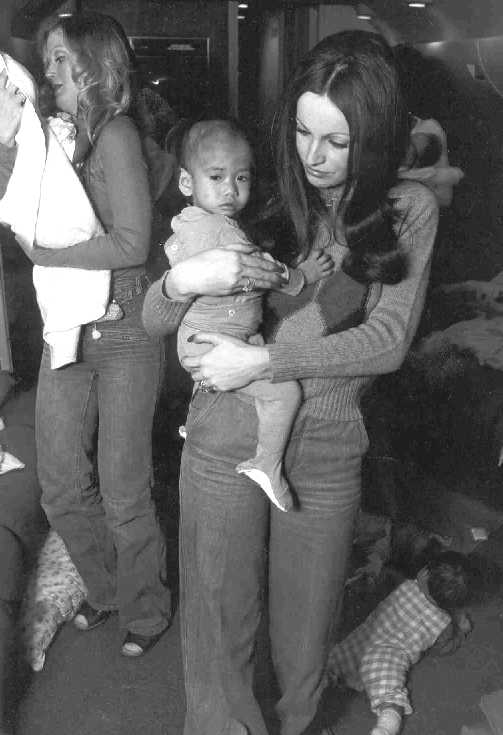Operation Babylift’s Tragic US Air Force Flight During a Mass Evacuation of Children From Saigon

A C-141 loaded with orphans and their boxes for transport from Saigon to Clark AFB, April 1975. Photo courtesy of U.S. Department of Veteran Affairs (https://www.blogs.va.gov/VAntage/69909/operation-babylift-veterans-receive-retroactive-benefits-va-help/)
A C-5A Galaxy transport plane was waiting on the tarmac as women belonging to the Defense Attaché Office (DAO) Saigon and Defense Intelligence Agency (DIA) escorted 250 South Vietnamese children aboard.
“We bucket-brigade-loaded the children right up the stairs into the airplane,” Captain Dennis “Bud” Traynor told NPR. Traynor was the pilot of the first official flight out of Saigon in support of Operation Babylift — the mass evacuation of orphaned children in response to an enormous North Vietnamese offensive during the end of the Vietnam War.
The children were so small they looked as if they had just been born, pulled from the delivery room, and secured in pairs in boxes placed in individual seats on the airplane. When all of the seats were occupied, Colonel Regina Aune, the chief medical officer, helped cinch down straps to fasten the children to the floor of the cargo area. Traynor took off en route to the United States, but disaster struck 12 minutes into the flight.

The cargo doors and part of the loading ramp located at the back of the plane malfunctioned and blew off the plane’s tail. The passengers who were not injured watched in horror as the doors were replaced with a gaping hole revealing the South China Sea below.
“It cut all control cables to the tail,” Traynor remembered. “So I’m pulling and pulling and pulling, and my nose is going down further and further and we’re going faster and faster and faster, and I can’t figure this out.”
The aircraft fell out of the sky and darted toward the ground. Traynor crash landed into a nearby rice paddy 2 miles shy of the Tan Son Nhut Air Base runway. The impact split the plane in half and crushed the cargo compartment where the majority of the orphans were kept.
“So I undid my lap belt, fell to the ceiling, rolled open the side window, and stepped out and saw the wings burning,” Traynor recalled, describing his response immediately after the crash. “And I thought, ‘Oh no, that’s the rest of the airplane.’”

The tragedy killed 138 people on board, including 78 children and 35 DAO personnel. The disaster on April 4, 1975, was considered the largest loss of life in DIA’s history up until the terrorist attacks on Sept. 11, 2001. Although the first official flight out of Vietnam was a catastrophe, Operation Babylift was largely a successful airlift operation carried out by the U.S. Air Force. During the month of April alone, the DAO processed 40,000 evacuees and more than 3,000 orphans during the operation.
Playboy founder and U.S. Army veteran Hugh Hefner later provided his plane, the “Big Bunny,” to transport Vietnamese children. Playboy bunnies were the ones who cared for the babies until they reached their destination.
Some of the orphans had no paperwork and were adopted by caring families in the U.S., Australia, Canada, and France. A nonprofit called Operation Reunite formed to assist orphans by collecting DNA samples from those who were part of Operation Babylift, then connecting them with family members still living in Vietnam.
More recently, Leigh Mai Boughton Small, who was adopted by a family in New England, used DNA through Ancestory.com to reconnect with her long-lost mother in Vietnam some four decades later.

Matt Fratus is a history staff writer for Coffee or Die. He prides himself on uncovering the most fascinating tales of history by sharing them through any means of engaging storytelling. He writes for his micro-blog @LateNightHistory on Instagram, where he shares the story behind the image. He is also the host of the Late Night History podcast. When not writing about history, Matt enjoys volunteering for One More Wave and rooting for Boston sports teams.
BRCC and Bad Moon Print Press team up for an exclusive, limited-edition T-shirt design!
BRCC partners with Team Room Design for an exclusive T-shirt release!
Thirty Seconds Out has partnered with BRCC for an exclusive shirt design invoking the God of Winter.
Lucas O'Hara of Grizzly Forge has teamed up with BRCC for a badass, exclusive Shirt Club T-shirt design featuring his most popular knife and tiomahawk.
Coffee or Die sits down with one of the graphic designers behind Black Rifle Coffee's signature look and vibe.
Biden will award the Medal of Honor to a Vietnam War Army helicopter pilot who risked his life to save a reconnaissance team from almost certain death.
Ever wonder how much Jack Mandaville would f*ck sh*t up if he went back in time? The American Revolution didn't even see him coming.
A nearly 200-year-old West Point time capsule that at first appeared to yield little more than dust contains hidden treasure, the US Military Academy said.












